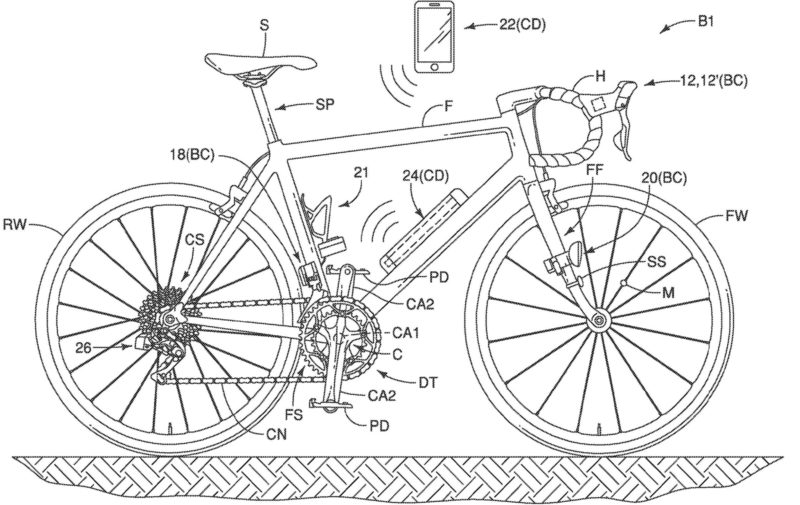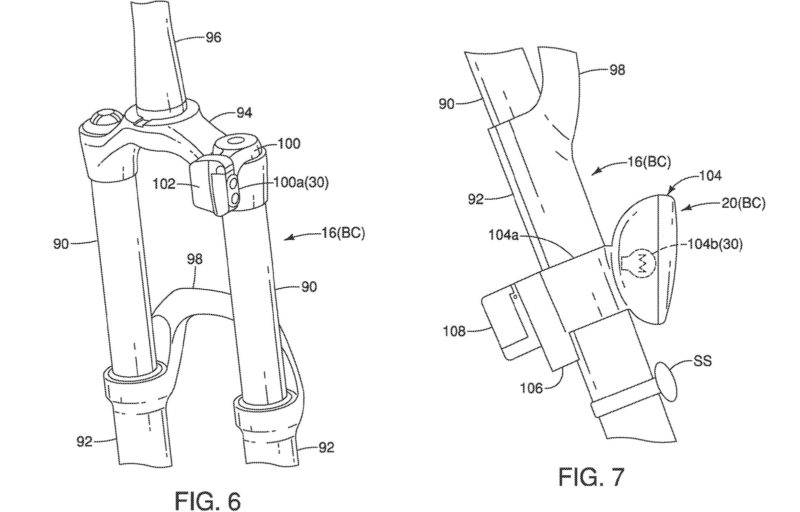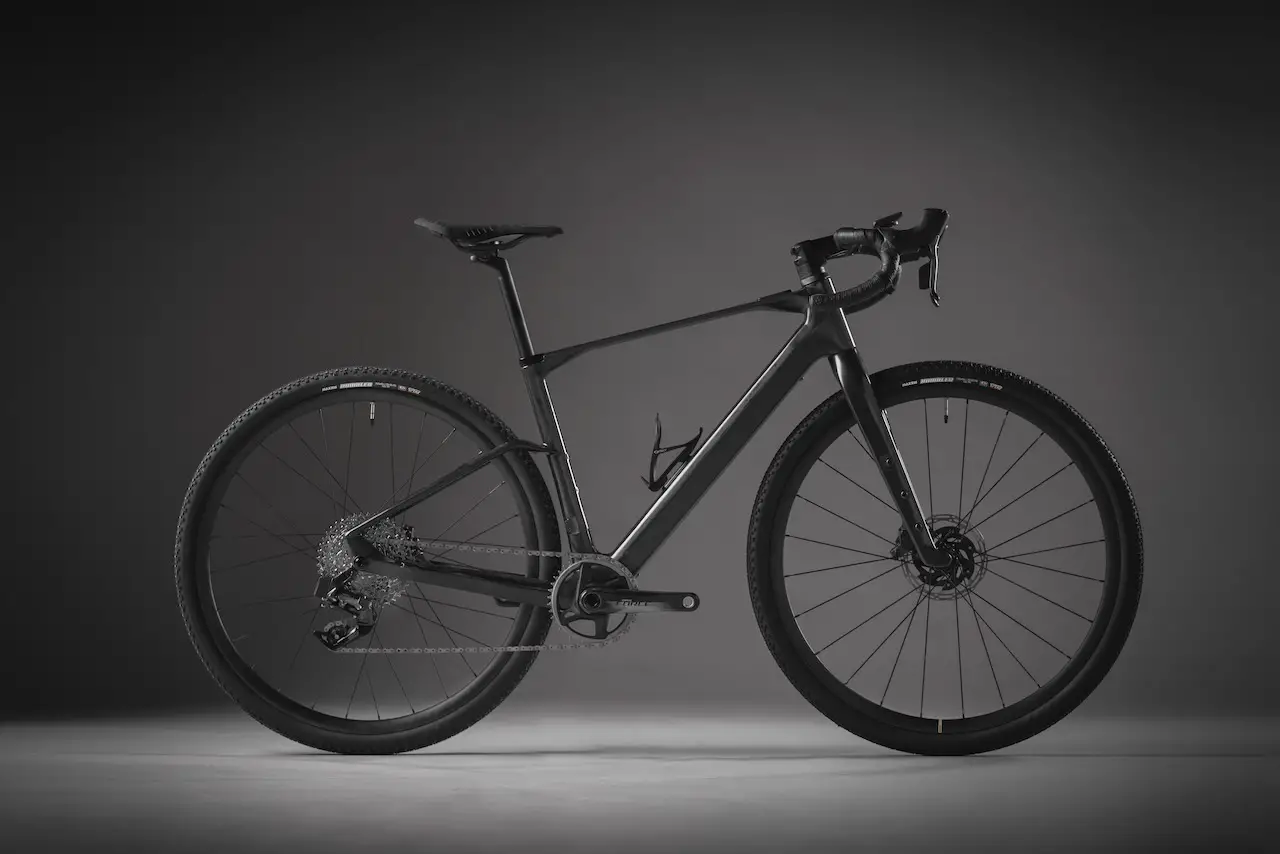[ad_1]
Will Shimano’s next-generation Di2 componentry re-charge wirelessly during riding? The brand’s latest patent titled “Bicycle Component, Non-Contact Charging System and Non-Contact Charging Method”, suggests it is not outside the realms of possibility.
US Patent 20230021733 A1 describes a non-contact charging system for bicycle components that is able to use electromagnetic induction or magnetic resonance to wirelessly charge an electronic dropper seatpost, suspension adjuster, lamp, and a front derailleur.
It spells out a situation wherein an eBike’s main battery (referred to as the non-contact charging device), housed within the downtube, is able to wirelessly charge the batteries of the aforementioned electronic components during riding. The implications of that? First off, your top-end full suspension eMTB with its electronically adjustable suspension damping, electronic dropper seat post, and even its integrated lights, could be recharged wirelessly, such that you’d only ever need to remember to recharge a single battery. And, there are plenty more benefits to be had from such a system…
As usual, when reached for comment, Shimano stated, “Shimano is constantly in development of new products but does not comment on rumors, innuendo, or speculation about products whether they are in development or not.” In the meantime, here’s an overview of what can be gathered from the patent.
Feature image annotation by Cory Benson
The only components that Shimano’s latest patent excludes is a rear derailleur and the eBike motor itself. Shimano does have a patent on a self-charging rear derailleur (EP2535257 A1), though. So, being self-sufficient, it wouldn’t necessitate the non-contact charging system described herein.

I digress. This latest patent, published 26th January 2023, depicts the implementation of the wireless charging system on both a road bike and a full suspension mountain bike but recognizes potential use on any bicycle, such as a cargo bike, gravel bike, commuter bike, and so on. For the road bike, a front derailleur and lamp are mentioned as the electronic devices that could be charged in a non-contact manner. On the mountain bike, the list of components that stand to benefit also includes a lamp, in addition to an electronic dropper seat post, and an electronically adjustable suspension (fork and shock).
Let’s take the electronic suspension adjustment (Fig. 6) as an example.

We previously covered Shimano’s patent on an electronic suspension control module with the ability to adjust the suspension stroke. That same technology is alluded to in this latest patent, but it goes further to suggest the module would also be able to adjust the softness/firmness of the suspension. That may well refer to the damping characteristics, or indeed the sag. Whatever may come of it, the point here is that the suspension adjustment module is one of the components described as chargeable in a non-contact manner, i.e., wirelessly.
In Fig. 6, you can see a telescopic suspension fork with a rechargeable battery unit (102) coupled to an electric actuator or electric motor (100a). Within that assembly, the Shimano patent describes a hypothetical series of “portions”, including a power receiver, a non-contact charging portion, a non-contact charging coil, a controller, a wireless communicator, an AC/DC Converter, and a rechargeable power source. This is diagrammatically illustrated in Fig. 3.

Here’s where it gets interesting.
The patent reads, “non-contact charging transmits power by electromagnetic induction using a frequency in a band between approximately 100 kHz and 200 kHz”. Now, induction charging requires the charging device and component-to-be-charged to be in close proximity to one another. So, while there would be no direct wire connection for the actual charging, a wire would still be required to route a flow of electrons from the eBike’s main battery to the non-contact charging coil housed near the suspension adjustment module, whether it be positioned on a fork or a rear shock damper.
What are the benefits of that? Well, the rider won’t need to recharge the battery separately. However, you are actually adding wires as compared to the current crop of RockShox Flight Attendant forks, or a current electronic dropper seat post, both of which simply house a removable rechargeable battery. More wires mean more internal routing to deal with, greater potential for rattle, a bigger headache for the mechanic… etc. The flip side of that is that the battery (or rechargeable power source as it is referred to) could be a lot smaller, given that its charge would be constantly replenished by the electromagnetic induction. That has the potential to make the component itself lighter.
Magnetic Resonance Non-Contact Charging of Bike Components?
Here’s where it gets way more interesting.
The patent goes on, “On the other hand, the at least non-contact charging coil can be configured to use magnetic resonance so that the non-contact charging devices can be one or two meters away from the bicycle components. When the non-contact charging coil receives electric power via magnetic resonance, the wireless communicator is used to communicate information to and from the non-contact charging devices”.

Next-level, right? In such a scenario, you could have truly-wireless recharging of your electronic components. A major benefit? Only needing to recharge one battery – the main battery of your eBike.
That said, it seems feasible this technology could be applied on a regular bike, too. After all, it’s not just eBikes that benefit from electronic dropper seat posts, suspension adjusters, integrated lights, and so on. If Shimano were to make the magnetic resonance-mediated non-contact charging method a reality, they could still apply it on a regular bike. There would still be a main battery which would be the non-contact charging device – it would simply be a lot smaller and lighter.
Where is Shimano going with this?
Toward a future of better integrated electronic components that require less input from the rider, on bikes and e-bikes that are lighter and cleverer than ever… I guess? Yes, I can hear the mechanics choking on their dinner. I do apologize, I meant you no harm. Jokes aside, it seems the potential is certainly there. The concept is kind of marvelous, but any benefits would be contingent upon equally marvelous execution.
I’ll finish up by saying that this patent is merely a description of a proposed invention. We aren’t saying that Shimano is working on this non-contact charging system right now, nor are we saying that it will ever make it to the market in the format described herein, or any other format for that matter. If we hear back from Shimano, we will update you guys right away.
[ad_2]
Source link




